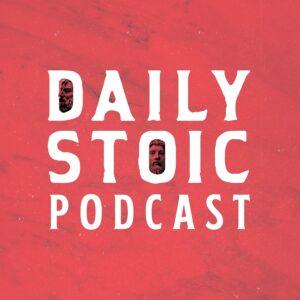
In this episode of the “Stuff You Should Know” podcast, the hosts explore the fascinating topic of plate tectonics and its role in making Earth inhabitable. They discuss the historical perspective on plate tectonics, the concept of Lemuria, and the intersection of folklore and scientific understanding. The episode also delves into the theories of lost landmasses, the discovery of Doggerland, and the groundbreaking work of Alfred Wegener in the field of continental drift. The hosts explain the mechanisms behind plate tectonics, the different types of plate boundaries, and the crucial role of plate tectonics in shaping Earth’s climate and regulating the carbon cycle. The episode concludes with a look into the future, predicting the formation of a new supercontinent and the long-term effects of plate tectonics.
The hosts of the “Stuff You Should Know” podcast explore the connection between plate tectonics and the understanding of human origin. They discuss the fascination with human origin after Darwin’s “On the Origin of Species” and introduce Helena Blavatsky’s book “The Secret Doctrine,” which proposed the idea of Lemuria, a lost continent. Blavatsky claimed that Lemuria was the place where the third root race lived alongside dinosaurs. The hosts highlight the problematic meshing of science and pop culture in the mid to late 19th century, leading to misconceptions about human origin and superiority.
The concept of Lemuria was not created by Blavatsky but was tied to tectonic plates and British zoologist Philip Sclater’s essay in 1864. Sclater proposed the idea of a land bridge between Madagascar and India, currently underwater, to explain the distribution of lemurs. This concept quickly entered pop culture and was embraced by figures like Blavatsky and German biologist Ernst Heckl. The hosts also discuss the example of Doggerland, a significant landmass that connected the UK to Europe but eventually submerged as sea levels rose.
The hosts delve into the theory of plate tectonics, starting with Alfred Wegener’s groundbreaking work on continental drift. They explain how technological advancements in the 50s and 60s confirmed Wegener’s theories and introduced the concept of plate boundaries. Plate tectonics involve three types of plate boundaries: divergent boundaries, where plates move away from each other; convergent boundaries, where plates collide; and transform boundaries, where plates slide past each other. The hosts highlight how plate tectonics drive natural phenomena like volcanoes and earthquakes.
The hosts discuss the mechanism of plate tectonics, explaining that the lithosphere moves on the asthenosphere, a viscous layer below the Earth’s crust. They mention that the exact mechanism of plate movement is still not fully understood but involves convective currents. The hosts describe how the Earth’s core remains hot due to leftover heat and radioactive decay, creating convective currents similar to those in a boiling pot of water. They also introduce the SLAB pull theory, which suggests that oceanic plates sink into less dense plates, causing plate movement. The hosts explain that plate interactions occur at divergent boundaries, where new land is formed; convergent boundaries, where mountain ranges or oceanic trenches are created; and transform boundaries, where earthquakes occur along fault lines.
The hosts emphasize the crucial role of plate tectonics in the existence of life on Earth. They explain that plate tectonics drive natural phenomena like volcanoes and earthquakes, which shape the planet’s surface. The hosts discuss how plate movements regulate Earth’s climate and prevent extreme temperature disparities between the equator and the poles. They mention the significance of plate tectonics in the carbon cycle, which helps regulate Earth’s temperature over long timescales. The hosts conclude by highlighting the predictions of computer simulations, which suggest the formation of a new supercontinent, Pangaea Proxima, in the future.
The “Stuff You Should Know” podcast episode on plate tectonics provides a comprehensive exploration of this fascinating topic. The hosts delve into the historical perspective, the concept of Lemuria, the theory of plate tectonics, the mechanism behind plate movements, and the importance of plate tectonics in shaping Earth’s climate and regulating the carbon cycle. The episode offers valuable insights into the connection between plate tectonics and human origin, highlighting the intersection of folklore and scientific understanding. Listeners gain a deeper understanding of the mechanisms that drive natural phenomena like volcanoes and earthquakes, as well as the long-term effects of plate tectonics on Earth’s land masses and climate.